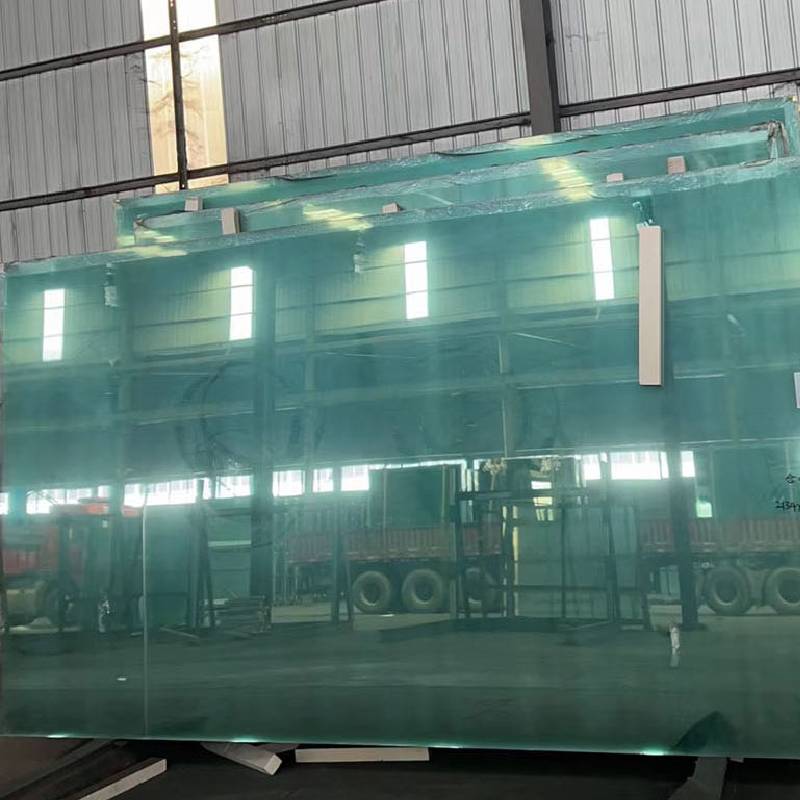The float glass process, a sophisticated and innovative method, revolutionized the glass manufacturing industry. This technique, developed in the mid-20th century, stands as a testament to the power of engineering and ingenuity, creating a ripple effect that continues to influence today’s production techniques. Delving into its intricacies reveals why its mastery is not just beneficial but essential for modern glass production.

Central to the float glass process is the careful manipulation of raw materials—primarily silica sand, soda ash, and limestone. These elements are heated to their melting point in a furnace, creating a molten glass mixture. The furnace's design is crucial, maintaining temperatures around 1700 degrees Celsius and sustaining a uniform heat distribution to prevent imperfections within the glass.
Expertise in managing this molten state is vital. Once the desired melt is achieved, it is transferred onto a bath of molten tin within a controlled atmosphere. Herein lies the genius of the float glass method the liquid glass spreads onto the tin, forming a perfect sheet due to the latter’s smooth surface and lack of reactivity with glass. It is critical to maintain an incredibly precise control of the environment; the absence of oxygen mitigates oxidation of the tin, ensuring the glass remains pristine.

The production line features meticulous attention to detail, overseen by skilled engineers who monitor each stage. The glass's thickness is governed by adjusting the speed at which it moves over the tin. Adjustments, although seemingly minor, require profound technical proficiency and experience, as variations impact both the glass's physical characteristics and its refractive properties, tailoring it for specific applications.
float glass process
As the glass cools, it gradually transitions from its liquid form into a solid state, a process that demands precision. The gradual cooling, or annealing, occurs within a lehr—a specialized kiln that alleviates internal stresses. This culminates in a product that exhibits superior structural integrity and optical clarity, characteristics that are non-negotiable in applications ranging from architectural installations to automotive windows.
The authority held by manufacturers in this domain is leveraged through continuous innovation and adherence to stringent quality control measures. From laboratory analysis to real-time monitoring with advanced sensor technologies, every step is documented and optimized. These efforts ensure the float glass meets and often exceeds international standards, such as ISO and ASTM, bolstering consumer confidence and reinforcing the trustworthiness of the product.
The sustainability of the float glass process adds another dimension to its allure. Modern adaptations have incorporated energy-efficient technologies, minimizing the environmental footprint. Utilizing recycled glass, or cullet, reduces the need for new raw materials, lowering energy consumption by 25% and demonstrating an industry-wide shift towards eco-conscious production practices.
In essence, mastering the float glass process encapsulates more than technical prowess; it involves an unwavering commitment to quality, innovation, and sustainability. This method remains unrivaled in producing glass that meets the ever-evolving demands of global markets—a testament to its enduring relevance and the continued need for expertise in its application. The companies that have honed and embraced these skills not only lead the market but also dictate the future of glass manufacturing.
 Afrikaans
Afrikaans  Albanian
Albanian  Amharic
Amharic  Arabic
Arabic  Armenian
Armenian  Azerbaijani
Azerbaijani  Basque
Basque  Belarusian
Belarusian  Bengali
Bengali  Bosnian
Bosnian  Bulgarian
Bulgarian  Catalan
Catalan  Cebuano
Cebuano  Corsican
Corsican  Croatian
Croatian  Czech
Czech  Danish
Danish  Dutch
Dutch  English
English  Esperanto
Esperanto  Estonian
Estonian  Finnish
Finnish  French
French  Frisian
Frisian  Galician
Galician  Georgian
Georgian  German
German  Greek
Greek  Gujarati
Gujarati  Haitian Creole
Haitian Creole  hausa
hausa  hawaiian
hawaiian  Hebrew
Hebrew  Hindi
Hindi  Miao
Miao  Hungarian
Hungarian  Icelandic
Icelandic  igbo
igbo  Indonesian
Indonesian  irish
irish  Italian
Italian  Japanese
Japanese  Javanese
Javanese  Kannada
Kannada  kazakh
kazakh  Khmer
Khmer  Rwandese
Rwandese  Korean
Korean  Kurdish
Kurdish  Kyrgyz
Kyrgyz  Lao
Lao  Latin
Latin  Latvian
Latvian  Lithuanian
Lithuanian  Luxembourgish
Luxembourgish  Macedonian
Macedonian  Malgashi
Malgashi  Malay
Malay  Malayalam
Malayalam  Maltese
Maltese  Maori
Maori  Marathi
Marathi  Mongolian
Mongolian  Myanmar
Myanmar  Nepali
Nepali  Norwegian
Norwegian  Norwegian
Norwegian  Occitan
Occitan  Pashto
Pashto  Persian
Persian  Polish
Polish  Portuguese
Portuguese  Punjabi
Punjabi  Romanian
Romanian  Russian
Russian  Samoan
Samoan  Scottish Gaelic
Scottish Gaelic  Serbian
Serbian  Sesotho
Sesotho  Shona
Shona  Sindhi
Sindhi  Sinhala
Sinhala  Slovak
Slovak  Slovenian
Slovenian  Somali
Somali  Spanish
Spanish  Sundanese
Sundanese  Swahili
Swahili  Swedish
Swedish  Tagalog
Tagalog  Tajik
Tajik  Tamil
Tamil  Tatar
Tatar  Telugu
Telugu  Thai
Thai  Turkish
Turkish  Turkmen
Turkmen  Ukrainian
Ukrainian  Urdu
Urdu  Uighur
Uighur  Uzbek
Uzbek  Vietnamese
Vietnamese  Welsh
Welsh  Bantu
Bantu  Yiddish
Yiddish  Yoruba
Yoruba  Zulu
Zulu 


